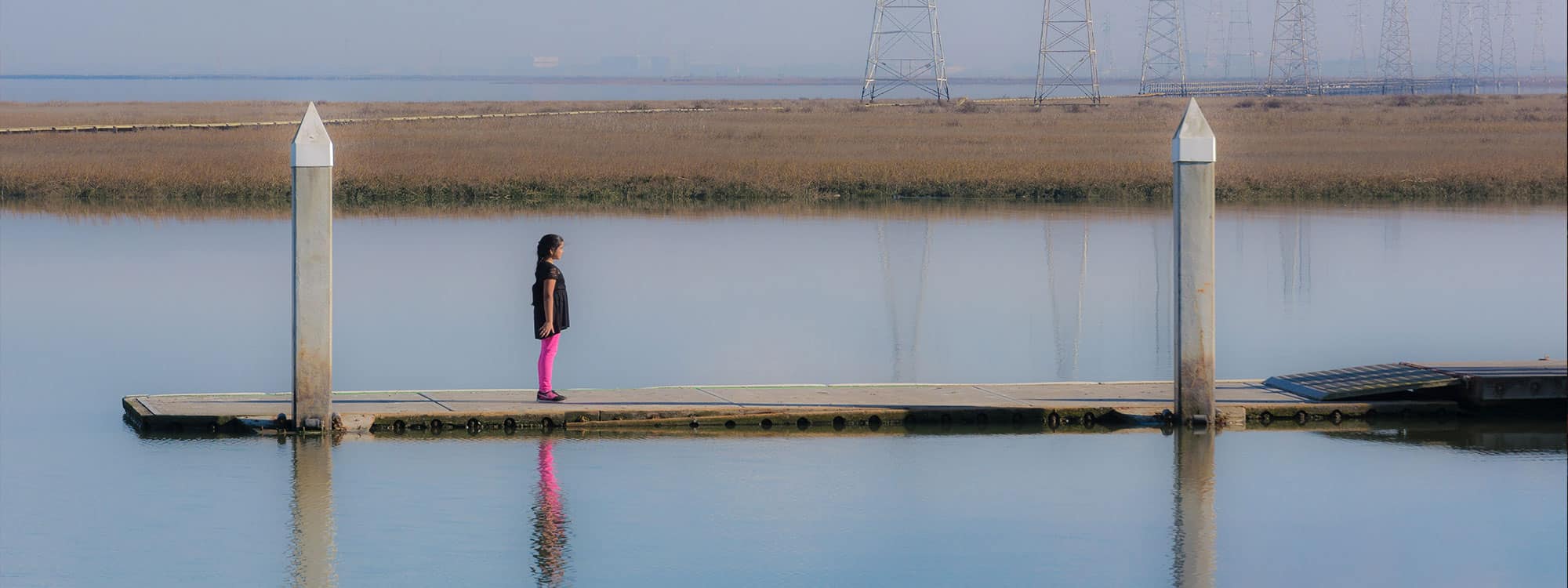By defending the natural systems of the Bay Area’s green infrastructure, we can create a future that is resilient to the effects of climate change.
If you’re reading this, you probably have a sense of how we at Greenbelt Alliance feel about the Bay Area greenbelt. Comprised of 3.6-million-acres of natural and agricultural lands, the greenbelt that surrounds our dynamic cities and towns is a vital facet of our region’s character. But aside from the obvious aesthetic value—the stunning beauty of our hills, shorelines, oak woodlands, and vast stretches of farmland—why is the greenbelt so important? Let’s step back and think about that.
One reason to preserve the greenbelt is an argument that’s about as far from beauty-based as possible; it’s just cold, hard, math. Protecting the greenbelt can be good for your city’s budget. When cities sprawl into open space lands, police, fire, and other essential city services have more ground to cover, and covering this ground costs money. When new development consumes open space, cities are forced to build new roads, water lines, and sewers—spending millions on construction and maintenance in the process.
What Is Green Infrastructure?
But there’s another argument for protecting the greenbelt, a relatively new idea that is starting to get a lot of attention from folks like policymakers, planners, and scientists. They’ve begun to view the greenbelt as the Bay Area’s “green infrastructure”—a network of systems that will help protect us in the face of natural disasters and a changing climate. With green infrastructure, unlike most infrastructure investments, we don’t have to spend billions of dollars to build these defenses. We simply have to protect what is already there. Here are a few examples of how this works:
Staving Off Drought with Natural Reservoirs
Climate scientists tell us long, severe droughts, like the half-decade stretch that ended with last winter’s rains, will become the norm as the climate changes; as such we can’t continue to depend on the Sierra snowpack for our water. Fortunately, the Bay Area’s greenbelt includes 1.8 million acres of groundwater recharge zones and catchment areas that help replenish the reservoirs, rivers, and lakes that contribute to our local water supply. Unable to rely on the snowpack as we have for generations, these local water sources will become increasingly important to our future.
Letting Wetlands Get Wetter
Climate change-influenced weather patterns could well mean that when it does rain it will rain harder. We’re likely looking at more intense storms and heavier rainfalls. Add in rising sea levels, and you’ve got an obvious recipe for increased flood risk. That’s part of why last year’s win on Measure AA, a yearly $12 parcel tax that raises money for wetlands restoration, was so important. These wetlands will buffer against future floods. And Bay wetlands are not the only lands that can help guard against floods. When left natural and unpaved, the floodplains of local waterways like Coyote Creek in Coyote Valley can help absorb extra runoff from major storms.
Slowing the Spread of Wildfire
It is impossible to discuss resilience without mentioning the North Bay fires, our region’s largest natural disaster since the Loma Prieta earthquake. Hundreds of thousands of acres were burned, nearly 9,000 homes and other structures were destroyed, and more than 40 people lost their lives. As horrible as this disaster was, it would have been worse if the communities of Napa and Sonoma counties had not shown foresight in recent years by defending their open spaces. Protecting the open spaces near their cities and towns with smart policies—such as community separators and urban growth boundaries—helped them ensure more people were not in fire-prone areas. In short, the greenbelt kept people out of harm’s way. As climate change continues to increase the size and duration of California’s wildfires, those protections will only grow more important.
Providing Safe Passage for Wildlife
Let’s not forget the non-human residents of the Bay Area. Our region is home to an abundance of wildlife—including 97 threatened and endangered species, and they too will feel the effects of climate change. Amidst the 2.5 million acres of wildlife habitat in our greenbelt are wildlife corridors such as Coyote Valley. These tracts of undeveloped land allow creatures to move from one area of open space to another. As climate change transforms habitats and displaces the species that live there, these corridors will become essential paths for animals in search of new homes.
Protecting Our Green Infrastructure
These are just a few of the many ways that the Bay Area’s “green infrastructure” helps buffer us from climate change. By defending this network of natural systems, we can ensure the region is more resilient in the face of climate change, without spending billions of dollars on costly man-made protections. Yet, even with this growing understanding of the greenbelt’s importance, the natural and agricultural lands of the Bay Area remain at risk. According to our signature report, At Risk: The Bay Area Greenbelt, 293,000 acres of our greenbelt are at risk of development over the next generation—an area 10 times the size of San Francisco, lost.
Greenbelt Alliance’s job is to help the Bay Area handle growth in an intelligent, sustainable manner. Safeguarding the regions green infrastructure helps protect our communities in the face of a changing climate, which places the issue of resilience at the core of our work. Please, help us ensure the cities and towns of the Bay Area remain amazing places for anyone to live, surrounded by the natural and agricultural lands that are so valuable to our present, and our futures.
Photo: Dan DeBold via Flickr




